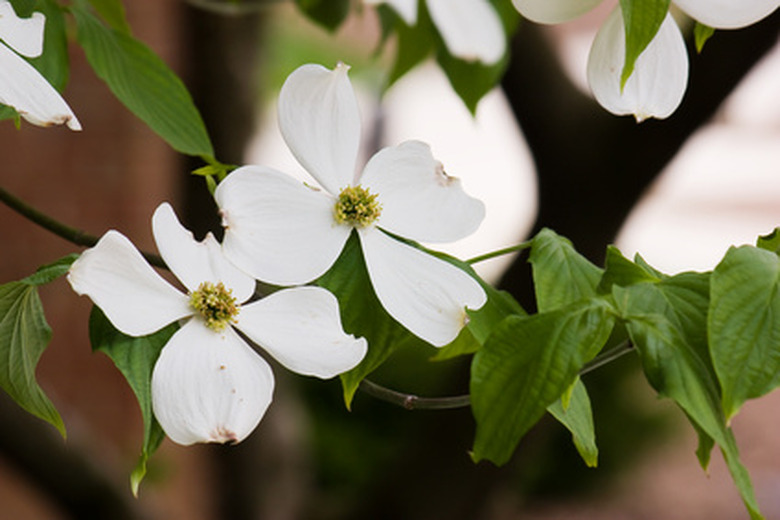Red Branch Dogwood Disease
Known as the red twig or redosier dogwood, Cornus sericea has striking bright red branches that provide contrast and interest in the late fall and winter garden landscape. With off-white, well-formed blooms that cluster in spring, followed by rich green foliage in summer, the fall surprise of carmine red branches is an extra treat. Unfortunately, the redosier dogwood suffers from a variety of common dogwood diseases that should be carefully monitored and treated promptly to ensure the continuous beauty of the tree.
Powdery Mildew
One of the most common diseases of C. sericea is powdery mildew, which appears as a thin, milk-like coating all over the foliage of the tree. The fungus Erysiphe pulchra attacks new growth with the powdered surface, while older growth may develop yellow or red discoloration, dead spots, or may drop off altogether. Poor air circulation and wet nights contribute to the spread of this disease. Rake up all leaf litter from the base of the tree promptly, and keep any branches of trees or shrubs growing over or around the tree trimmed back to improve circulation.
- Known as the red twig or redosier dogwood, Cornus sericea has striking bright red branches that provide contrast and interest in the late fall and winter garden landscape.
Dogwood Anthracnose
Discula destructiva, the fungus that causes dogwood anthracnose, can quickly kill a redosier dogwood and spread to surrounding dogwoods, causing mass destruction. Appearing in spring as small dots on foliage, the disease progresses into purple-edged brown spots that spread and cause the leaf to turn gray, gradually withering. Finally, sores called cankers will develop on the trunk system and kill the tree from ground up to the canopy. Provide improved air circulation and promptly remove any infected leaf material, cankerous branches or twigs, and keep the tree base clean of leaf litter.
Leaf Spot
Cercospora cornicola and Septoria fungus create what is commonly known as leaf spot on this red branch variety of dogwood. Leaves will gradually be covered with tiny, irregularly shaped, rust- or deep-colored spots. Wet, warm weather can cause the condition to worsen if not tended to. The main concern with this condition is that over time, the tree may prematurely lose leaves or even produce less after several seasons of infection. As with other dogwood diseases, keep leaf litter cleaned up from around the base of trees. Dispose of litter separately from your compost pile, as disease can overwinter in infected material.
- Discula destructiva, the fungus that causes dogwood anthracnose, can quickly kill a redosier dogwood and spread to surrounding dogwoods, causing mass destruction.
Scales
Scales are actually small pests that cannot move, appearing to be bumpy lesions on tree stems and foliage. Look for gray, black or brown, circular raised areas on plant parts. The scale will use sharp mouth parts to cut into and take sap from the tree. Yellow, dying leaves may result. Use a horticultural spray in the spring to completely cover adult scales and eggs to control infestations.
Dogwood Borer
An additional harmful insect is the dogwood borer, Synanthedon scitula, which can be identified by a cream-colored body and red head. This immature member of the wasp family will bury itself deep into the tree through sores or other openings in the trunk. Feeding on the structures that provide sustenance to the dogwood, this borer can quickly kill a redosier dogwood. The best defense against the dogwood borer is a healthy, unscathed tree. Keep up regular fertilization and watering schedules year-round, and avoid harming the trunk or branches with pruning or mowing equipment.
- Scales are actually small pests that cannot move, appearing to be bumpy lesions on tree stems and foliage.
- Feeding on the structures that provide sustenance to the dogwood, this borer can quickly kill a redosier dogwood.
